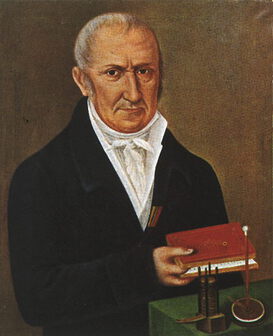History of Electricity - Volts, Current, AC and DC
Starting With Ben Franklin
Many people think Benjamin Franklin discovered electricity with his famous kite-flying experiments in 1752, but electricity was not discovered all at once. At first, electricity was associated with light. People wanted a cheap and safe way to light their homes, and scientists thought electricity might be a way.
The Battery
Learning how to produce and use electricity was not easy. For a long time there was no dependable source of electricity for experiments. Finally, in 1800, Alessandro Volta, an Italian scientist, made a great discovery. He soaked paper in salt water, placed zinc and copper on opposite sides of the paper, and watched the chemical reaction produce an electric current. Volta had created the first electric cell.
By connecting many of these cells together, Volta was able to "string a current" and create a battery. It is in honor of Volta that we measure battery power in volts. Finally, a safe and dependable source of electricity was available, making it easy for scientists to study electricity.

A Current Began
An English scientist, Michael Faraday, was the first one to realize that an electric current could be produced by passing a magnet through a copper wire. It was an amazing discovery. Almost all the electricity we use today is made with magnets and coils of copper wire in giant power plants.
Both the electric generator and electric motor are based on this principle. A generator converts motion energy into electricity. Amotor converts electrical energy into motion energy.
Mr. Edison and His Light
In 1879, Thomas Edison focused on inventing a practical light bulb, one that would last a long time before burning out. The problem was finding a strong material for the filament, the small wire inside the bulb that conducts electricity. Finally, Edison used ordinary cotton thread that had been soaked in carbon. This filament didn’t burn at all—it became incandescent; that is, it glowed.
The next challenge was developing an electrical system that could provide people with a practical source of energy to power these new lights. Edison wanted a way to make electricity both practical and inexpensive. He designed and built the first electric power plant that was able to produce electricity and carry it to people’s homes.
Edison’s Pearl Street Power Station started up its generator on September 4, 1882, in New York City. About 85 customers in lower Manhattan received enough power to light 5,000 lamps. His customers paid a lot for their electricity, though. In today’s dollars, the electricity cost $5.00 per kilowatt-hour! Today, electricity costs about 12 cents per kilowatt-hour for residential customers, and about 7 cents per kilowatt-hour for industry.
AC or DC?
The turning point of the electric age came a few years later with the development of AC (alternating current) power systems. With alternating current, power plants could transport electricity much farther than before. In 1895, George Westinghouse opened the first major power plant at Niagara Falls using alternating current. While Edison’s DC (direct current) plant could only transport electricity within one square mile of his Pearl Street Power Station, the Niagara Falls plant was able to transport electricity more than 200 miles!
Electricity didn’t have an easy beginning. Many people were thrilled with all the new inventions, but some people were afraid of electricity and wary of bringing it into their homes. Many social critics of the day saw electricity as an end to a simpler, less hectic way of life. Poets commented that electric lights were less romantic than gas lights. Perhaps they were right, but the new electric age could not be dimmed.
In 1920, only two percent of the energy in the U. S. was used to make electricity. Today, about 41 percent of all energy is used to make electricity. As our use of technology grows, that figure will continue to rise.
References & Resources
- Need - http://www.need.org
Latest Post
- Dependency injection
- Directives and Pipes
- Data binding
- HTTP Get vs. Post
- Node.js is everywhere
- MongoDB root user
- Combine JavaScript and CSS
- Inline Small JavaScript and CSS
- Minify JavaScript and CSS
- Defer Parsing of JavaScript
- Prefer Async Script Loading
- Components, Bootstrap and DOM
- What is HEAD in git?
- Show the changes in Git.
- What is AngularJS 2?
- Confidence Interval for a Population Mean
- Accuracy vs. Precision
- Sampling Distribution
- Working with the Normal Distribution
- Standardized score - Z score
- Percentile
- Evaluating the Normal Distribution
- What is Nodejs? Advantages and disadvantage?
- How do I debug Nodejs applications?
- Sync directory search using fs.readdirSync